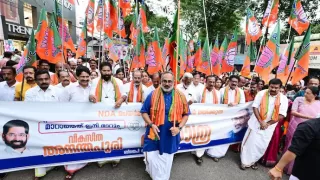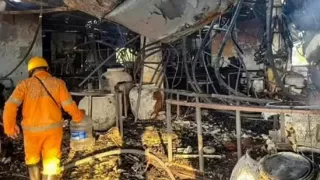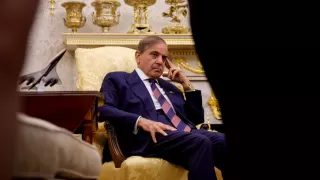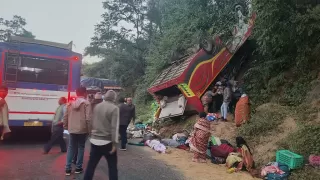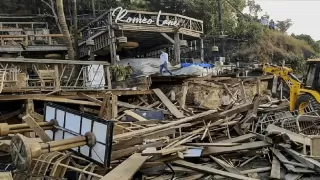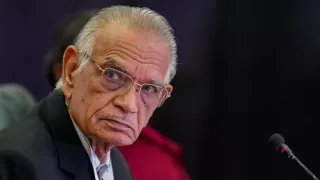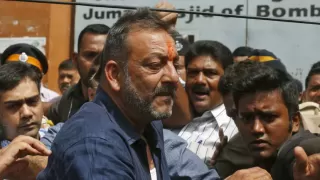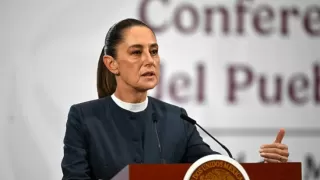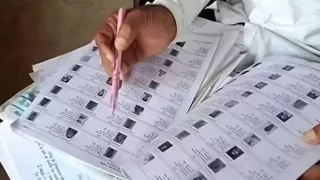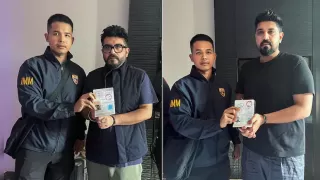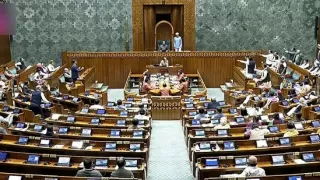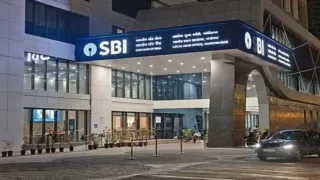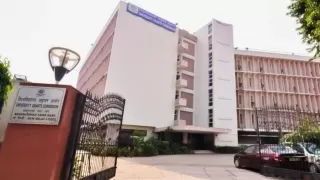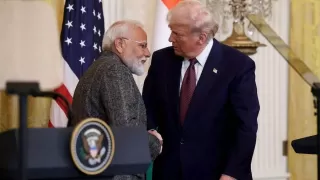Rohit Arya, the man who was shot dead by Mumbai police after he took 17 children hostage at an audition theatre in Powai on Thursday, had claimed in a video that his act was motivated by unpaid dues from the Maharashtra government. The school education department, however, denied his allegations, stating that Arya failed to submit any supporting documents for his claim. The incident, which triggered panic across the city, ended after a tense three-and-a-half-hour standoff at RA Studio in Mahavir Classic, Powai.
Armed with an airgun and an inflammable spray, Arya had held the children hostage at the venue where they were reportedly attending an audition. According to officials, all 17 children were rescued unharmed after police launched a careful operation that ended with Arya being shot dead. During the episode, he released a video explaining his grievances and asserting that he never intended to harm anyone. Instead, he said his actions were a desperate attempt to draw attention to the ₹2 crore he claimed was owed to him by the Maharashtra school education department.
“My demands are simple and moral and ethical,” Arya said in the video, emphasizing that he was not a terrorist and had no unlawful motive. His message, however, failed to justify the extreme step he took, which led to a tragic conclusion. Authorities later confirmed that Arya had been under stress for months, repeatedly alleging non-payment for his cleanliness awareness initiative under the government’s Swachhata Monitor project.
Background of the Swachhata Monitor project
Shiv Sena leader Deepak Kesarkar, who served as Maharashtra’s school education minister between 2022 and 2024, said that he had asked Rohit Arya to conduct a cleanliness awareness programme titled Swachhata Monitor on a pilot basis. The initiative was meant to promote hygiene and civic responsibility among school students under the Majhi Shala, Sundar Shala campaign. Kesarkar also revealed that he had personally helped Arya financially last year after learning that he was facing difficulties with payment clearance.
Rohit Arya worked as Project Director for “Project Let’s Change – PLA Swachhata Monitor”, which was adopted by the state’s primary education department in 2022. The programme was a mix of media campaigns and on-ground activities to improve cleanliness in schools across Maharashtra. However, Arya later began to publicly complain that despite the project’s adoption, his firm had not received full payment for the work done, leading him to protest outside Kesarkar’s official residence and at Azad Maidan in Mumbai during 2024.
Social media posts from the Swachhata Monitor account show that Arya had been vocal about the issue for months, claiming that his films and documentaries were used by the government without credit or payment. His wife, Anjali Arya, also confirmed that her husband had been struggling to get the sanctioned amount released and that his repeated appeals had gone unanswered.
Government’s denial and clarification
Following the incident, the Maharashtra government’s school education department issued a formal statement denying Arya’s allegations. It clarified that Arya’s claims of unpaid dues were not supported by proper documents. The department said that the filmmaker had collected registration fees from several schools for participation in the Swachhata Monitor campaign, but failed to submit accurate financial details or receipts.
The statement further mentioned that the budget proposals Arya submitted for operational costs and advertising were “vague” and lacked required documentation. In August 2024, the department reportedly instructed him to deposit the money collected from schools into a government account and provide a complete expenditure report before any further payment could be processed. Since he failed to comply, officials said, the proposal was left pending.
The department added that Arya’s company, Apsara Media Entertainment Network, had initiated the Swachhata Monitor project through the Corporate Social Responsibility (CSR) route, with initial government approval granted in September 2022. A payment of ₹9.9 lakh was made to his firm during that phase. Later, another proposal in June 2023 approved the continuation of the project, and a budget of ₹2 crore was allocated under the Mukhyamantri Majhi Shala Sundar Shala initiative. However, according to officials, Arya’s revised budget lacked supporting documents for various costs, including publicity, logistics, and technical aspects, which led to delays and eventually halted implementation.
Why the project stalled
In its statement, the education department said Arya later sought to revive the campaign under “Swachhata Monitor 2024–25” and requested ₹2.41 crore for state-wide execution. During review, authorities discovered that his firm was charging fees from schools through its private website without proper authorization. The education commissioner in Pune then directed Arya to stop collecting such fees and to deposit the already collected funds into the government account.
The government said it also required Arya to issue a written undertaking confirming that no school would be charged participation fees for the project. However, Arya allegedly did not submit the necessary paperwork or financial details, and therefore, no further action was taken. With the change in administration and the return of the NDA government under Deputy Chief Minister Devendra Fadnavis, the Swachhata Monitor project was discontinued altogether in 2024.
Former minister’s response
Former education minister Deepak Kesarkar clarified that he had personally intervened when Arya complained about unpaid dues. “After speaking to department officials, it became clear that he hadn’t submitted the required documents. In government, no department can release funds without proper bills. He was demanding payment without documentation,” Kesarkar said. The Shiv Sena leader added that he had given Arya a small amount from his personal funds to help him during the financial crisis.
Kesarkar expressed regret over the tragic turn of events, saying that Arya should have resolved the issue through proper channels instead of resorting to violence. “He was a passionate person who genuinely believed in his work. But he let frustration get the better of him,” he said. The minister also urged media and citizens not to spread misinformation about the government’s involvement, emphasizing that due process and documentation are mandatory for any financial transaction.
Police investigation and aftermath
According to police, the standoff at Powai lasted for over three hours, during which Arya repeatedly told negotiators that he had no intention of harming the children. The Mumbai Police’s Quick Response Team and Crime Branch personnel surrounded the RA Studio and eventually rescued all hostages unharmed. Officers later confirmed that Arya was carrying an airgun and an inflammable spray, which posed a potential threat. He was shot dead after attempts at negotiation failed.
Authorities are now reviewing his communications, financial records, and social media posts to determine the full sequence of events that led to the incident. Initial reports suggest that Arya had been under immense financial pressure and mental stress due to his disputes with the education department. The police have also questioned associates linked to his company and the Swachhata Monitor initiative.
Public reaction and broader questions
The shocking Powai hostage situation has raised several questions about how grievances against government departments are handled and whether bureaucratic delays can sometimes lead to extreme actions. While officials maintain that rules must be followed for transparency, some activists argue that small entrepreneurs often struggle with payment clearances for government-linked projects, leading to prolonged distress.
As the investigation continues, authorities have urged people to avoid speculation and respect the privacy of the families involved. For now, the Maharashtra government stands firm on its stance that there were no dues pending in Arya’s name, and that his claims lacked verifiable proof. The tragic episode serves as a grim reminder of how personal frustration, bureaucratic gaps, and miscommunication can converge into a catastrophic situation.
Also Read: PM Modi: Nehru Blocked Sardar Patel’s Plan to Unite Kashmir




